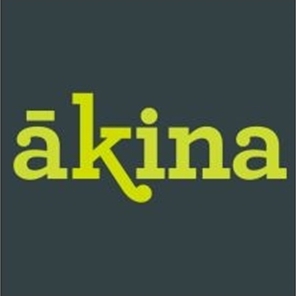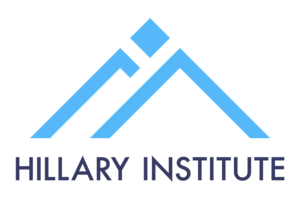Autodesk Offers New Features To Enhance Sustainable Building Practices
- Autodesk introduces new scan-to-mesh capabilities to enhance sustainable building practices such as retrofitting existing buildings and adaptive reuse projects.
- Additional updates to the AECO portfolio deliver performance enhancements to core products and help teams streamline complex models.
Autodesk, Inc. (NASDAQ: ADSK) has unveiled a host of new advancements to its architecture, engineering, construction, and operations (AECO) portfolio that help industry professionals streamline data and workflows throughout project lifecycles.
As the industry increasingly focuses on sustainable practices, such as retrofitting existing buildings and adaptive reuse projects, Autodesk is proud to introduce new scan-to-mesh capabilities in Recap Pro, and a ReCap Mesh Revit plugin to support efforts to minimise environmental impact and reduce resource consumption.

This is significant in Australia, as there is a growing movement to retrofit old homes to make them more sustainable, energy efficient and liveable. There are almost 8 million homes that were built before energy efficiency standards, and lack insulation, modern heating methods and are poorly designed for comfort.
To heat these homes, Australians are using significantly more energy – resulting in the 8 million pre-energy rating homes accounting for 18 per cent of Australia’s greenhouse gas emissions.
To meet Australia’s goal of cutting emissions by 43 per cent by 2030, these homes will need to be retrofitted for energy efficiency.
By using scan-to-mesh technology, the AECO industry can now retrofit, renovate or make existing assets more sustainable by turning a photograph or scan into high quality, detailed 3D models.
“Sustainability isn’t just about new projects or developments. It’s often about working with the built environment that already exists, and thinking of innovative ways to make these structures more liveable and sustainable,” said Andy Cunningham, Senior Regional Director for Australia and New Zealand at Autodesk.
“Across Australia we’re seeing many organisations and industry leaders embrace creative ways to meet retrofitting and adaptive reuse challenges. But they need the support of technology. Our new AECO offerings will allow industry leaders to switch between workflows, models and data sets more efficiently, enabling more time for creative problem solving.”
Scan-to-mesh
With advanced scan-to-mesh capabilities, a new Revit integration, improved cloud-based coordination, and integrated photo-to-3D workflows, the latest version of Recap Pro transforms the way users capture and use reality data. It’s designed to help workflows become more efficient, less error-prone, and better integrated across teams—ultimately driving better project outcomes with reduced effort and cost.
The new ReCap Mesh Revit plugin will support efforts to minimise environmental impact and reduce resource consumption. This plugin enables the integration of large quantities of reality capture data into Revit without affecting project performance.
This will also allow for more visibility across models, allowing users to quickly navigate between projects, areas and features.
Meshed geometry can now be easily added into Revit projects to significantly reduce the need for costly, time-consuming manual modelling.
Data to fuel innovation and improved collaboration
As the AECO industry embraces digitisation, people are often busy working across project phases, using multiple models and comparing a multitude of data sets. Having a seamless workflow across site modelling, structural detailing, and documentation is essential to improve efficiency and accuracy.
As projects expand, model performance is extremely important for productivity and sanity. Through Accelerated Revit Graphics (in tech preview), Autodesk has focused on enhancing the visual performance responsiveness of Revit to improve the navigation speed in 3D and 2D views. This enables smoother model inspection when navigating from one project area to another to edit your model more efficiently, even with large datasets.
Data to help complex infrastructure projects
Civil engineers are increasingly using data to problem solve for complex infrastructure challenges in a 3D model-based environment. The newest additions to Civil 3D help engineers to improve project timelines, increase accuracy, deepen collaboration, and make data-driven decisions with greater precision.
With the integration of Dynamo, Civil 3D 2026 revolutionises drainage system design. New nodes for catchments allow users to automate catchment group management, create catchments from boundary geometry, and configure catchment flow path data effortlessly. The Drainage Analysis for Civil 3D extension (in tech preview) also enables users to leverage the powerful InfoDrainage analysis engine directly into Civil 3D without having to install InfoDrainage, now providing a simple, connected workflow.
Additionally, users can uplevel their design experience and review with the innovative 3D Model Viewer. The viewer enables effortless 3D review within Civil 3D, providing immediate visual feedback and better context for complex objects.
You can read more detail about each launch here:
· What’s New in ReCap Pro 2026
About Autodesk:
The world’s designers, engineers, builders, and creators trust Autodesk to help them design and make anything. From the buildings we live and work in, to the cars we drive and the bridges we drive over. From the products we use and rely on, to the movies and games that inspire us. Autodesk’s Design and Make Platform unlocks the power of data to accelerate insights and automate processes, empowering our customers with the technology to create the world around us and deliver better outcomes for their business and the planet. For more information, visitautodesk.com.auor follow@autodesk. #MakeAnything


 Parrot Analytics: Netflix Earnings - Price Hikes With Minimal Churn | Will Netflix Be A Bright Spot For Markets?
Parrot Analytics: Netflix Earnings - Price Hikes With Minimal Churn | Will Netflix Be A Bright Spot For Markets? Canterbury Museum: Mystery Molars Lead To Discovery Of Giant Crayfish In Ancient Aotearoa New Zealand
Canterbury Museum: Mystery Molars Lead To Discovery Of Giant Crayfish In Ancient Aotearoa New Zealand Ngā Pae o te Māramatanga: Māori Concerns About Misuse Of Facial Recognition Technology Highlighted In Science
Ngā Pae o te Māramatanga: Māori Concerns About Misuse Of Facial Recognition Technology Highlighted In Science Retail NZ: Retailers Call For Flexibility On Easter Trading Hours
Retail NZ: Retailers Call For Flexibility On Easter Trading Hours WorkSafe NZ: Worker’s Six-Metre Fall Prompts Industry Call-Out
WorkSafe NZ: Worker’s Six-Metre Fall Prompts Industry Call-Out PSGR: Has MBIE Short-Circuited Good Process In Recent Government Reforms?
PSGR: Has MBIE Short-Circuited Good Process In Recent Government Reforms?



